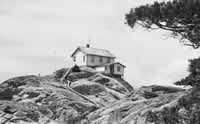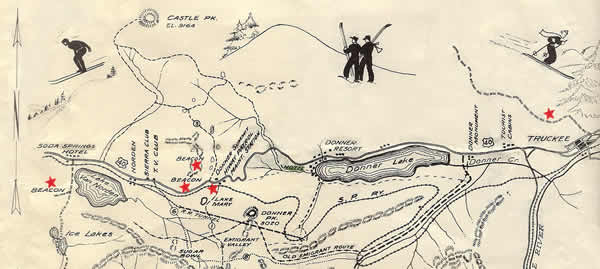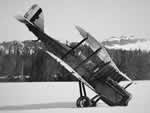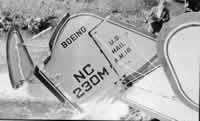 When airplanes were new, pilots flew by the "seat of their pants." They flew only when they could see following roads and railroads from town to town. Bad weather and darkness grounded them.
When airplanes were new, pilots flew by the "seat of their pants." They flew only when they could see following roads and railroads from town to town. Bad weather and darkness grounded them.
Pilots wanted to fly though and people wanted airmail, so the Federal Government developed airways and entrepreneurs improved the airplanes.
The first transcontinental air route went right over Donner Summit. Pilots were guided along by beacons, arrows on the ground, and markings on roof tops. The beacons flashed at different frequencies and intervals so pilots could identify their locations.
![]()
Donner Summit also hosted a station with a radio operator to pass on weather information and help pilots in trouble. It sat on the rock knoll just east of Donner Ski Ranch (top picture). Donner Summit's station was number 15 from San Francisco and had "SL-SF 15" painted on one side of the roof and "Donner" on the other. A large arrow on the ground pointed east to the next higher numbered station.
The beacons sat at intervals on the approaches to Donner Summit. One sat on Beacon Hill (Soda Springs Ski Area), another on Signal Hill (Donner Ski Ranch), and another on Mt. Donner. The red stars on the map to the below show Donner Summit beacons.
The Government also built emergency airstrips at regular intervals. The one nearest, at Blue Canyon, still exists.
Once airplanes began flying with radios, the airway stations broadcast signals to help pilots stay on track.
The Donner Summit station was officially commissioned in 1931, although the beaconed route had been in use by then for some years. It was decommissioned in 1952, after planes began flying higher and using more advanced course technology. The beacons and the stations had become irrelevant.
Donner Summit, as usual, posed unique challenges to installing the air route. Steel poles had to be used instead of wood. When the route was first set up in 1927, planning didn't take the weather into account so the steel radio masts had to be hauled in over the snow by dog teams. The small house (above) for the operators had to be anchored with steel cables so it would not be blown away. The postholes holding the cables had to be blasted into the granite rock. The average Donner Summit snowfall is 35-40 feet so the house had to be built eight feet off the ground so operators could get in and out.
Even though the view was spectacular, Donner Summit was not a popular duty for the operators since they were cut off for a lot of the winter.

Even with the specified air route, radios, beacons and ground markings, crashes still happened like the 1922 crash here.

 The crash here of a Boeing Tri-motor is interesting. No one was hurt in the 1931 crash into Lake Van Norden. The plane was resurrected, fixed and went on to flying Alaska.
The crash here of a Boeing Tri-motor is interesting. No one was hurt in the 1931 crash into Lake Van Norden. The plane was resurrected, fixed and went on to flying Alaska.

